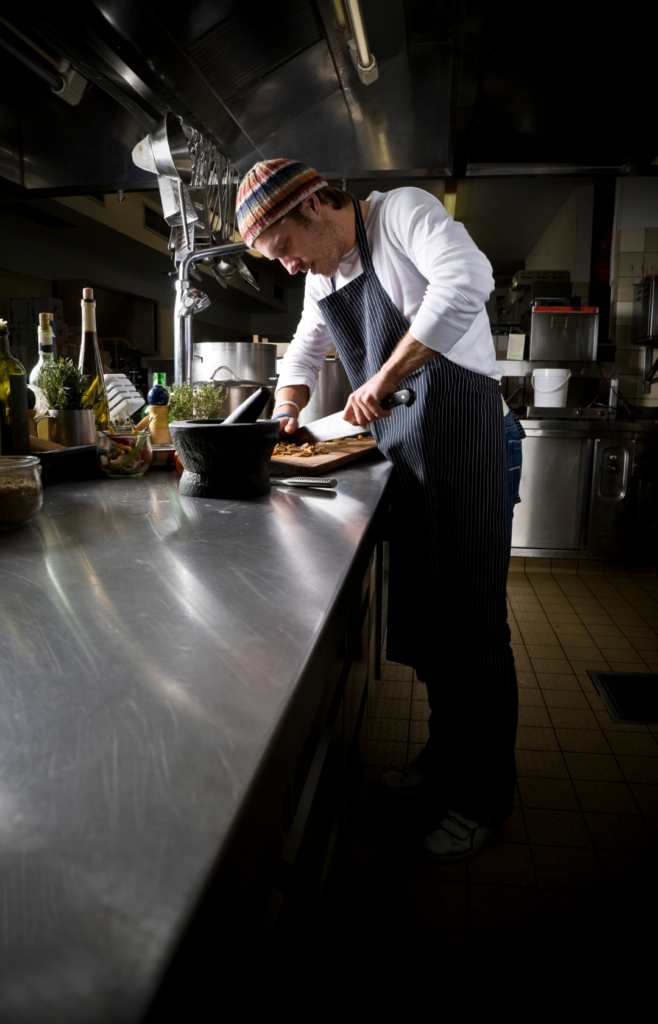If you’re working in foodservice, you’ve probably heard of dark kitchens by now. It’s essentially a venue that operates without a shop front and if you’re a frequenter of apps like Uber Eats and Deliveroo then it’s very possible that you have ordered from one before without knowing.
What a lot of people don’t know, is that these types of establishments have been around for a while now. You could even argue that the practice was frowned upon pre-COVID, with chefs and patrons preferring the social benefits of inviting sit-down diners. Now, it’s blowing up in a big way and could be commonplace for the Australian food scene.
If you’re intrigued by the idea of dark kitchens and are considering one for your own business, here are some of the pros and cons.
PRO: It is arguably a COVID-friendlier practice
You might miss out on the take from having sit-down diners, but at least you do not have to worry as much about the transmission risks associated with serving customers in the COVID world of lockdowns and restrictions we are now living in. If we’ve learned anything from second lockdowns here in Australia and around the world, it is that a return to lockdown is always possible. By operating out of a dark kitchen, the risks of transmission from customers to staff (and vice versa) can be reduced.
CON: Hard to push your brand
We all know just how competitive the hospitality market is, so promotion and brand are really important for business. A big way to show off your food is through how you set up the storefront and position your offerings to the eye of the public. A big outdoor dining area works wonders when people walking by witness your beautiful food being brought to the table. With a dark kitchen, you miss out on that, and most of your promotion is focused on online channels.
PRO: It lets you focus on the food
Sometimes you might make it to the end of a busy shift and wonder how it all went so smoothly. Well with dark kitchens you might find the art of cooking to be a little simpler. You’ll no longer have to tend to the needs of problematic customers or have to fend off wait staff scheming for leftover chips. It’s all about waiting for orders, cooking the food, and cleaning up along the way (of course).
CON: Your culinary excellence gets packed in a box
Food isn’t just about the taste, it’s also about the presentation. One of the most enjoyable parts of being a chef is flexing your creative muscles on the plate (for both the chef and the patron). As dark kitchens run almost exclusively through delivery apps, your delicious meal will likely lose presentation points when it’s placed in its paper packaging.
PRO: Make the kitchen your own again
“WHO IS PLAYING THAT MUSIC!” is what your head chef would say normally if you started blasting tunes mid-service. However, by working in a dark kitchen there are no customers to complain about your horrible taste in music. That’s not to say the boss still won’t chew your head off, so maybe go easy on the AC/DC.
CON: Less friends to make
With the day-to-day operation of a dark kitchen requiring less manpower, working in hospitality becomes less of a social outlet. Usually, it’s easy to make friends in foodservice, with a big crew and often seasonal changes to the staff. Fewer cooks in the kitchen might make life a little easier in the instance of dark kitchens, but it’s probably not your thing if you consider yourself a social butterfly.
When looking at the pros, it’s easy to see the upside of working in a dark kitchen during times like these. We expect more chefs and business owners to jump on this trend as more commercial cooking spaces become available across the country, but it’s hard to imagine it having an impact on the traditional forms of dining. Because although dark kitchens make perfect sense and have proven to be successful so far, people love to get out, and society likely appreciates it now more than ever.
